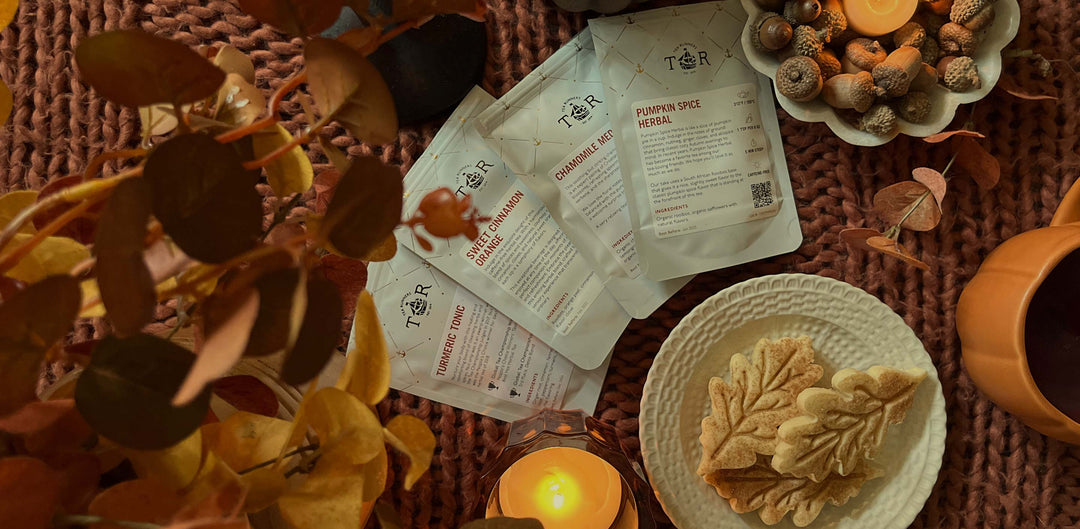Where does the flavor come from in flavored teas?
As any tea lover is well aware there are many hundreds of varieties of tea in the world with fanciful and robust flavors. From the ubiquitous Earl Grey infused with bergamot oil to floral or fruity or herbal custom shop blends, flavored teas are everywhere. It’s rare to find a tea drinker that hasn’t had a spicy masala chai or a minty iced tea. They appeal to many palates and dominate the western tea market.
One rarely stops though to wonder about those flavorings. We typically judge a tea based on how pleasant the taste is, how it smells, and sometimes on how attractive the tea blend itself is. However teas can be flavored in many different ways, some modern and some traditional with methods dating back centuries. Which method is chosen has a huge impact on the appeal of the tea.
Teas can be flavored in one of three methods:
-
Inclusions
-
Scenting
-
Oils (with natural or artificial flavoring)
Inclusions

Inclusions are just a fancy tea industry term for any tidbits one adds to tea leaf to create a blend. Rose buds, dried apple pieces, cinnamon sticks, etc. These are all inclusions, and the list is nearly endless.
If you can see it among the tea leaf, it’s an inclusion.
There are flowers of all kinds added to teas: lavender, rose, chrysanthemum, lily, osmanthus, and many others. Many of them are used in culturally traditional pairings such as rose and black tea, or yellow osmanthus and oolong. Others are playful and unique blends with combinations that are rarely seen outside of a deluxe Valentine’s bouquet.
Masala chai, which literally means “spiced tea”, is a wonderful melange of spice inclusions including ginger, cardamom, cinnamon, anise, clove, and peppercorns. Numerous other tea traditions have their own spiced tea varieties such as cardamom black tea in Turkey and the spiced tea with saffron and rose traditional to Uighur groups in Western China.
Fruity teas are common in parts of the world such as Eastern Europe, the Middle East and Russia, and usually have dried bits of any number of kinds of fruit. Turkey is known for a tea made from dried apple pieces and spices, but in this case the apple is the base of the tea rather than an inclusion! A specialty tea shop typically has a sizable number of fruit-flavored teas containing fruit inclusions of every kind imaginable: blueberries, pineapple, pear, peach, and so on.
Then there are teas with inclusions that don’t fit squarely in one the categories above, such as tea with crushed nuts, or with herbal leaf, stems, or roots like mint, nettle, or licorice. The only limitation in inclusions is the imagination of the blender.

Scenting
The second method of flavoring tea is scenting, a method originating in traditional Chinese tea. These teas are flavored entirely with a scenting process. There are no inclusions used to add flavoring. The most common example of a scented tea is Chinese jasmine tea, although there are others like lychee black teas and magnolia oolongs.
Traditional jasmine tea is scented by drying the tea leaf among racks of fresh jasmine flowers. Tea leaf is a sponge for odors and picks them up rapidly. When stored correctly scented tea retains those odors for a very long time. That scent comes across as a gentle but strong flavor when brewed, and can last through numerous resteepings of the leaf. A well scented jasmine tea will bind the tea and floral favors together so well that one might well imagine that the flowers you are tasting grew on the tea plant itself.
Occasionally jasmine flowers are added to jasmine teas, but usually this is only to add visual appeal as dried jasmine flowers have very little scent or flavor to them. Still, the beauty of the tea is a big part of enjoying tea, so they do serve to enhance the experience.
A number of jasmine teas are not traditionally scented but rather flavored with jasmine oil. Oils are the third method of flavoring tea. Generally this is as a cost-saving choice, or a method for producers of tea in areas where fresh jasmine flowers are not readily available. Generally the result is not as subtle nor as long lasting since the oils are mostly infused into the brew in the first few infusions. If one is brewing gongfu cha style with multiple infusions the first brews will have strong jasmine taste, but fade off in later infusions as most of the jasmine oils have been washed out. Scented jasmine tea is therefore preferable for a multiple infusion session.
Oils (Natural & Artificial Flavoring)

Numerous other teas, including some very high-end varieties, are also flavored with oils. Take your typical Earl Grey tea, a black tea flavored with bergamot, a citrus grown in Italy and other parts of the Mediterranean. Is there actual bergamot peel in the tea blend? Typically not. It’s far more common for bergamot to be added as an oil to the Earl Grey tea leaf. Does this mean that it is a lower grade tea? Not at all - bergamot flavor is imparted far better with oil than with peel pieces which do not hold their aroma and flavor as well, and which would shorten then shelf life of the tea.
In other cases an oil is used where it would be impractical or too expensive to use the real base flavoring. A great example is strawberry. Strawberry tea is usually flavored with an artificially flavored oil as it is difficult to add strawberries to the tea leaf in a shelf-stable manner. Some tea producers get around this with pieces of freeze-dried strawberries, but this make the tea much more expensive to produce and does not have as strong a flavor in the final brew. Some use both oils and strawberry pieces to get the advantage of both methods.
In this example the flavored oil comes from artificial flavoring sources. What does that mean, and how do they compare to natural flavoring? Why do tea ingredient lists quite often say “natural and artificial flavorings?” Many of us would choose a natural flavoring over artificial flavoring, so why are artificial flavorings used?
Natural flavors and artificial flavors are, strictly speaking, chemically identical to each other, at least with respect to the flavor in question. The key difference is in whether they were derived from a naturally-occurring source or if they were entirely synthesized. Is the molecule found naturally and just needs to be extracted? Or does the molecule need to be chemically derived?
Usually that means that natural flavors are made through a process like the distillation of oils that takes jasmine flowers and extracts jasmine oil, or processes bergamot peels into bergamot oil. Natural flavors come from natural materials, but are processed in a lab-like setting and may still require some chemical acrobatics to extract.
Then there are artificial flavors. They are also processed in a lab setting, but the desired flavor molecules need to be brought into creation wholesale. Can’t process honeydew melon as a natural flavoring? Find what molecule makes a honeydew melon taste like a honeydew melon and use the lab to make that molecule!

Quite often the flavor ends up tasting as natural as any natural flavoring, and indeed the lab-like processes are similar. Take the common artificial kitchen vanilla. It is not derived from vanilla beans but is extracted from wood pulp as lignin, or wood creosote as guaiacol. Wood pulp is naturally occurring, but it takes some chemical transformation to synthesize it into vanillin, the molecule that gives vanilla its taste. Since the vanillin does not naturally occur in the wood pulp it is considered an artificial flavor. However there is also a method of getting vanillin from rice bran using microorganisms for the processing, and this classifies it a natural flavor. However that method is fifteen times more expensive than extracting the artificial vanillin so it is rarely used. Chemically however, the two vanillins are considered identical.
Still, tea producers recognize that people prefer natural materials to artificial ones, so artificial flavorings are typically only used where it is very difficult, very expensive, or impossible to reproduce the flavor naturally.
Most high end teas are flavored through inclusions and scenting, and only occasionally use flavored oils when necessary to add a desired flavor note. In the end though the final infused cup of tea determines whether or not flavoring was successful. If the tea is to your liking, the flavoring has accomplished its purpose.








Leave a comment